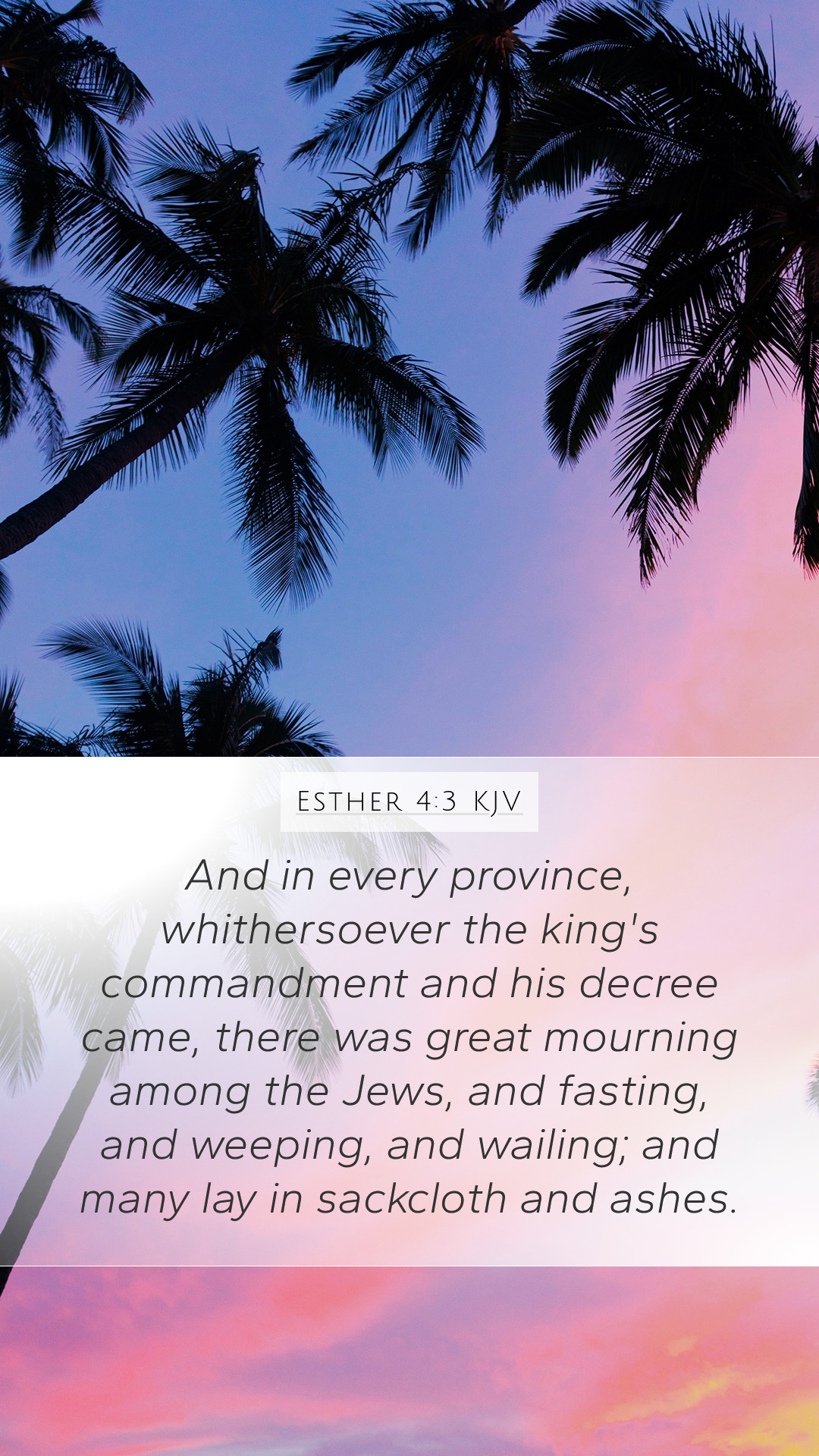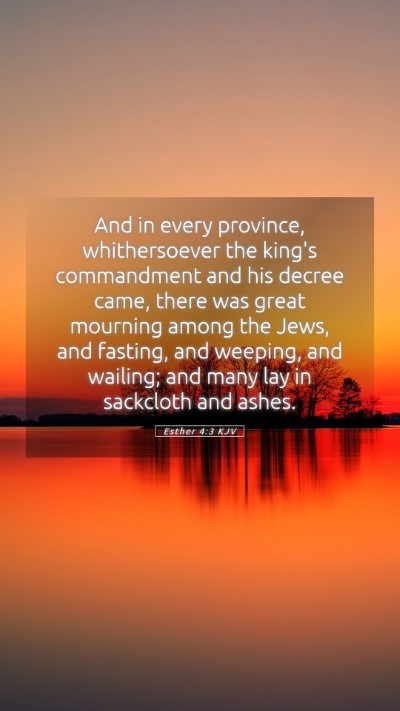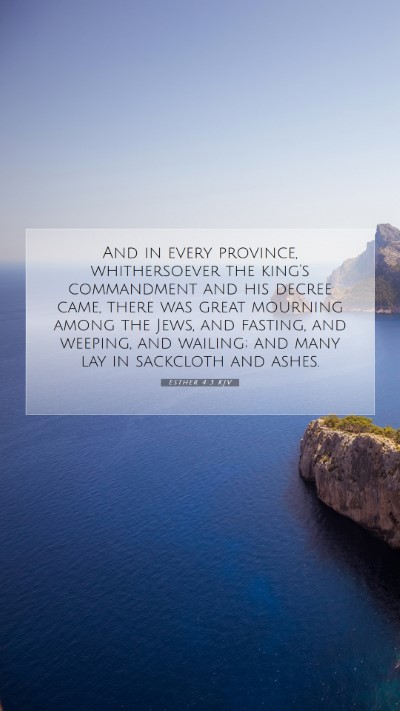Old Testament
Genesis Exodus Leviticus Numbers Deuteronomy Joshua Judges Ruth 1 Samuel 2 Samuel 1 Kings 2 Kings 1 Chronicles 2 Chronicles Ezra Nehemiah Esther Job Psalms Proverbs Ecclesiastes Song of Solomon Isaiah Jeremiah Lamentations Ezekiel Daniel Hosea Joel Amos Obadiah Jonah Micah Nahum Habakkuk Zephaniah Haggai Zechariah MalachiEsther 4:3 Meaning
What is the meaning of Esther 4:3?
And in every province, whithersoever the king's commandment and his decree came, there was great mourning among the Jews, and fasting, and weeping, and wailing; and many lay in sackcloth and ashes.
Esther 4:3 Bible Verse Meaning
Understanding Esther 4:3
Bible Verse: Esther 4:3
This verse reveals profound emotional turmoil and spiritual significance amidst an impending crisis faced by the Jewish people. Through our exploration, we aim to understand the implications of this verse, drawing from esteemed Public Domain Commentaries to shed light on its meaning.
Bible Verse Meaning
In Esther 4:3, we observe the reaction of the Jewish community in response to a grave threat against their existence orchestrated by Haman. The emotional and physical manifestations of their distress highlight not only their fear but also their profound reliance on God in the face of adversity.
Insights from Commentaries
Matthew Henry's Commentary
Matthew Henry emphasizes the deep sorrow that filled the land. He points out that the mourning of the Jews was not merely a reaction to fear but a call to prayer and fasting, indicating their earnestness to seek God's intervention. Henry notes that such acts of mourning can sometimes lead to significant spiritual breakthroughs, thereby highlighting the importance of communal grieving in seeking divine favor.
Albert Barnes' Notes on the Bible
Albert Barnes elaborates on the notion that this communal lamentation emphasizes the severity of the threat they faced. He interprets the widespread nature of the mourning, which extended throughout cities and provinces, as indicative of the unity and shared identity among the Jewish people. Barnes underscores the idea that such collective expressions of sorrow serve as a reflection of faith, demonstrating an understanding of the dire situation while simultaneously prompting an appeal to divine protection.
Adam Clarke's Commentary
Adam Clarke provides context by explaining the historical basis of Haman's decree, inciting the madness that overtook the Jewish community. Clarke notes the fasting and weeping as desperation for God's mercy, highlighting the role of national identity and the synergy between prayer and action, suggesting that true faith often produces these heartfelt responses amidst trials.
Key Themes and Applications
- Desperation and Hope: The mixed emotions of fear and faith illustrate the complexity of human experience when facing monumental challenges.
- The Power of Fasting and Prayer: The act of mourning and calling upon God is significant as it reflects a deep-seated belief in divine intervention.
- Community and Identity: The collective nature of their lament underscores the strength found in unity and shared belief among God's people.
Cross References
- Nehemiah 1:4: Nehemiah’s mourning upon hearing about Jerusalem’s desolation.
- Joel 2:12-13: A call to repentance and fasting, unbeknownst to the impending judgment.
- Psalms 30:5: "Weeping may endure for a night, but joy comes in the morning," illustrating the hope after sorrow.
Conclusion
Esther 4:3 serves as a testament to the powerful responses of the Jewish people in times of great distress, reflecting their reliance on God through prayer and fasting. The insights derived from esteemed commentaries convey profound meanings and interpretations, revealing this verse’s relevance for both historical understanding and contemporary application in our spiritual lives.
SEO Keywords
By studying this scripture, biblical scholars and laypeople alike can enhance their Bible study insights and engage deeply with Bible verse meanings. It fosters an understanding of how to interpret Bible verses and the significance of scripture in daily life.
Suggested Bible Study Methods
- Engaging in Bible study groups to foster discussion.
- Utilizing Bible study tools and resources to deepen understanding.
- Participating in online Bible study forums for diverse perspectives.
- Exploring Bible study guides to navigate historical contexts.


